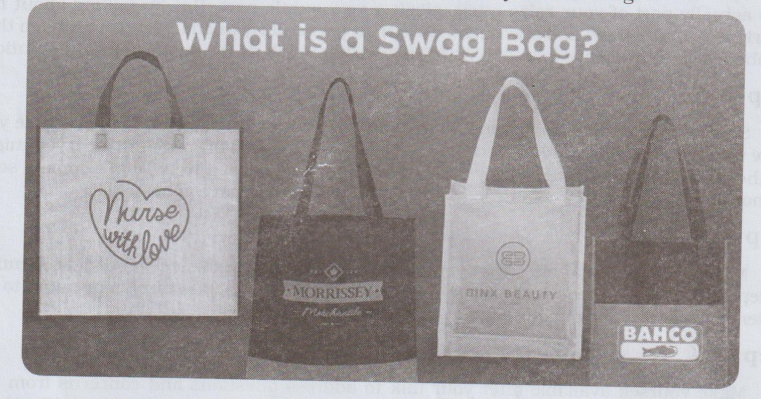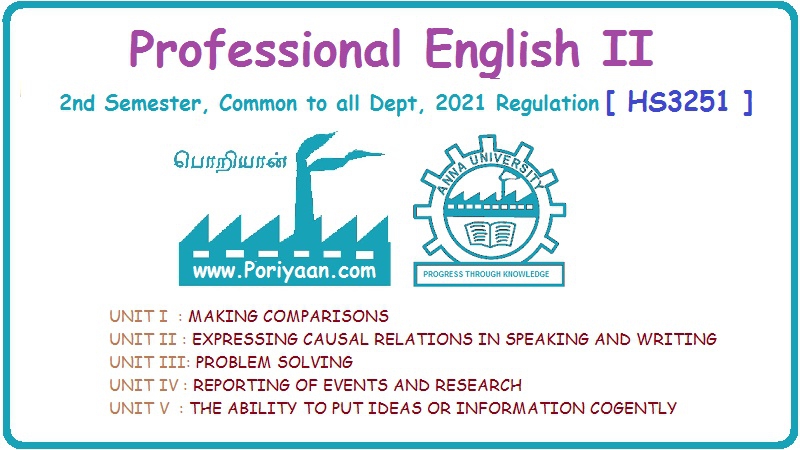Professional English: Speaking: UNIT 1
Marketing a Product
Speaking | Professional English
Marketing is a constant process. If you're selling a product or service, you will have to speak or communicate. Speaking can be a practical strategy in your marketing plan.
UNIT - I
1. MARKETING A PRODUCT
Marketing
is a constant process. If you're selling a product or service, you will have to
speak or communicate. Speaking can be a practical strategy in your marketing
plan. It is an important strategy. It is possible to make a sale on the spot or
surely in the near future. The product can be sold once or to multiple members
of your audience. Whatever may be the case, you will have to make an
interesting presentation. But you can use the same strategies for marketing
your products for a certain period of time and then you will have to change
your modus operandi. You don't have to be overtly 'salesy' to sell a product or
offer a service.
Examine your audience:
Look
at the audience who is most likely to buy your products or services. They are
your potential customers and you will be able to effectively sell your
products.
Decide
whether you are going to address your ideal audience or you will be talking to
conference organizers. Make sure you are talking to the right audience. Of
course, if you you, really want to speak to a group of folks who aren't likely
to purchase anything from that's your wish or prerogative - but categorize
audience who will become your customers.
Ask
for extra information about the type of people attending your presentation.
Some
event organizers do not like to give lot of details and they may feel irritated
to answer your questions but many will be happy to help you.
Speak:
Plan
to talk about topics that make the benefits of your product or service clear -
even if you never mention your company's name.
Plan an Offer Just for the Event
Create
an offer specifically for the event. Your offer doesn't actually have to be all
that unique. It can even be something that you normally offer to customers.
Develop
a physical manifestation of your product, if it's not something that you
can just carry with you to the event, take the most amazing e-book or suggest
an amazing website where they can view the physical manifestation of the
product.
The
audience should be given a physical reminder like post card. Having a
piece that audience members can take away is doubly important.
Plan
how to measure your sales resulting from your speech. Especially if what you're
offering is the sort of thing that a potential customer won't immediately act
on, make sure that they act on in the near future.
Line
up a way to get your marketing materials, or even a sample of your product,
into the hands of attendees. Preferably, you can find an option beyond handing
it out yourself, although that's also a necessary part of marketing your
products or services. If you can arrange to have your materials included in a swag
bag or available on a table for attendees, you can make sure that more
people have access to what you're offering.

Arrange to Sell Your Products at the Event
Step 1
Check
what sales are permitted at the event. Not all conferences or other events
allow speakers to set up a table for their products or to offer a service to
attendees.
Step 2
Even
if the event doesn't allow direct sales, check what other options you have: if
you are creating a special deal just for attendees, many event organizers are
willing to be a little more flexible. You may need to pay for an exhibit hall
table or for a sponsorship to be able to sell your product or services.
Step 3
Prepare
your presentation based on the guidelines of the event organizer. If you are
not allowed to pitch your product or service during your talk, don't. Make sure
that people come up to speak to you afterwards.
Step 4
Prepare
statements that you can use in conversation. While you can't script out a conversation
in advance, you can make sure that you have facts and numbers at hand and
you're prepared to talk about them.
Make Your Offer
Step 1
sob
Share your background during your talk. You need to win over your audience from
the very beginning of any talk you give. The first few minutes are very
important. Doing so is actually part of your sales pitch, albeit a very subtle
part. But by talking about the experiences your clients and customers have had,
particularly in addressing a problem that members of your audience face, you're
establishing yourself as the person with the solution.
Step 2
Show
- don't tell - what you can do. You can't get up on stage and tell everyone you
know what you're doing. Rather, you need to be two steps ahead of your
audience: you might tell them about a problem that they don't even know they
have, a trend that's coming soon or another factor that they can't easily deal
with, unless they have your help.
Step 3
Mention
any special offer that you've brought for your audience - but just mention it.
Repeating what a great deal it is or trying to make a hard sell is rarely
appealing to an audience, so keep your pitch brief.
Step 4
Make
yourself available after your talk to address questions and concerns from the
audience. Even if you've added your information to a swag bag or you've got a
table where preferably you're handing out information, make sure that you can
hand something out - more than just a business card - while you're talking.
Make Yourself
Step 1
Include
all of your relevant contact information in your presentation. It's often best
to have an introductory slide, giving your name and company, and then using the
last slide to offer up all of your contact details - that's the slide that will
stay up the longest if you take questions.
Step 2
Create
opportunities for follow up. By asking your audience to contact you about a
specific question, á survey or some other detail, you're making it more likely
that they'll contact you after the event. Integrate such a request into your
presentation.
Step 3
Mention
your talk on social media, both before and after. Make sure that you use any
event hash tag or the specific forums where your audience may be, so that you
can remind your audience of what they found valuable about your talk.
Step 4
Post
your slides online. It's so easy to share slides after a presentation, as well
as make it clear that those slides are part of a particular event.
6 Steps to Talk About Your Product With Passion
Here
are some suggestions for reviving up when you're writing or talking about your
products:
1.
Sit up straight. Better yet, stand. Best: Walk or run around your office!
2.
Smile! It boosts the listeners.
3.
Look up, not down at your notes or your computer screen. Talk spontaneously.
4.
Wave your arms and do whatever you do naturally when you're enthusiastic and
confident.
5.
Keep a few toys around like ball, Low-tech but fun.
6.
Enjoy the dialogue. When you have fun and love what you do, your enthusiasm is
infectious or contagious and the audience will become enthusiastic.
Exercise
Imagine
you are a Marketing Executive for your software on learning all four skills of
English with various online tests. The software can be installed in systems in
English labs for the betterment of the students. Give a talk to the professors
of the college with an aim to sell your software.
Professional English: Speaking: UNIT 1 : Tag: : Speaking | Professional English - Marketing a Product
Related Topics
Related Subjects
Professional English II
HS3251 2nd Semester 2021 Regulation | 2nd Semester Common to all Dept 2021 Regulation
